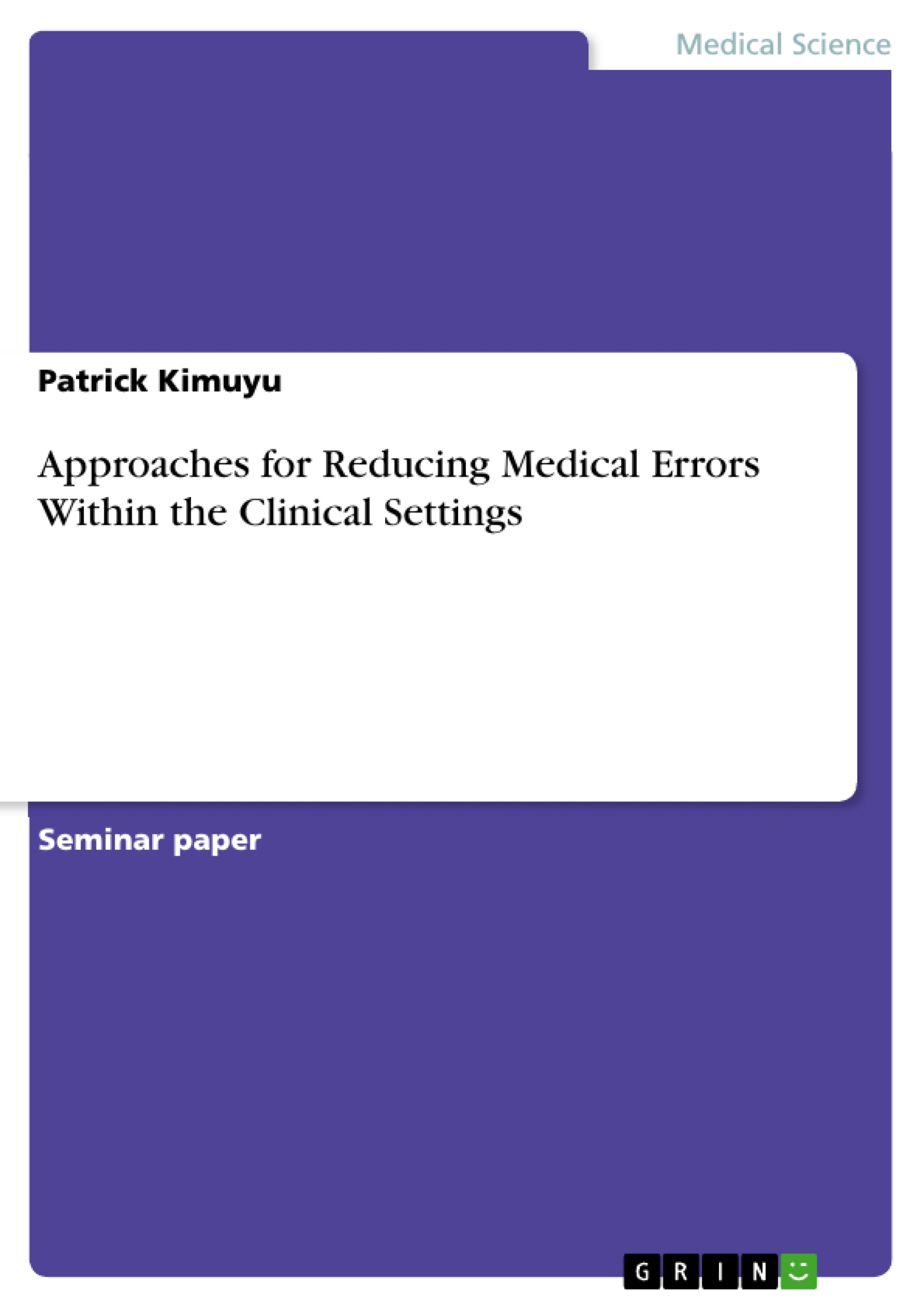In retrospect, it is apparent that the healthcare setting is shifting from the traditional practice to evidence based practice which is characterized by safety and quality of care. As such, the paradigm of evidence based practice seems to identify the twenty-first century healthcare profession as an evolved version of the historical practice. Despite the observed changes in professionalism and conceptionalization of practice, an array of clinical issues that compromise patients’ safety and treatment outcomes continue to be witnessed. One of the most common clinical issues that I have witnessed both in clinical placement and laboratory simulations is the issue of medical errors. It is quite surprising that this clinical issue has become highly pronounced across the continuum of care setting, ranging from medical diagnosis to nursing interventions. According to Grober and Bohnen (2005), medical errors have become a significant challenge in public health and their threat to patient’s safety raises concern. From a theoretical perspective, medical error bears different definitions. Currently, there is no standardized nomenclature for medical error’s definition. However, some few studies have investigated ‘medical error’ directly and proposed universally acceptable definitions of this phenomenon. In general, medical error can be defined as any action that can result to adverse patient outcomes (Hofer & Hayward 2000). Based on the principle of evidence based practice, medical error has an immense relevance to contemporary nursing practice. The clinical rationale for this perspective is based on the fact that nurses are at the central point of patients’ care. They are required to carry out nursing interventions in the course of care where their actions are defined by various clinical and nursing standards. As such, nurses play an integral role in determining patient outcomes. This demonstrates how medical errors impact the nursing practice, more than any other field in healthcare setting.
Inhaltsverzeichnis (Table of Contents)
- Introduction
- Evidence
- Impact on Nursing Leadership
- Conclusion
Zielsetzung und Themenschwerpunkte (Objectives and Key Themes)
This text aims to analyze the prevalent issue of medical errors in the healthcare setting, focusing on its impact on patient safety and nursing practice. It explores the underlying causes and explores potential solutions, particularly through the lens of nursing leadership and evidence-based practice.
- The prevalence and impact of medical errors on patient safety
- The role of nursing leadership in preventing medical errors
- The effectiveness of transformative leadership in reducing medical errors
- The use of Root Cause Analysis (RCA) and Healthcare Failure Mode and Effects Analysis (HFMEA) for medical error prevention
- The importance of evidence-based practice in addressing medical errors
Zusammenfassung der Kapitel (Chapter Summaries)
- Introduction: This chapter introduces the topic of medical errors and their growing significance in healthcare. It emphasizes the shift towards evidence-based practice and highlights the prevalence of medical errors across various care settings. The chapter defines medical errors and discusses their relevance to nursing practice, particularly due to nurses' central role in patient care.
- Evidence: This chapter delves into research on the prevalence, cost, and forms of medical errors. It cites studies from the UK and US that demonstrate the significant impact of medical errors on patient safety and healthcare systems. It also discusses common types of errors, such as prescribing, diagnostic, and surgical errors, and their contributing factors.
- Impact on Nursing Leadership: This chapter examines the role of nursing leadership in preventing medical errors. It highlights the challenges faced by nursing leaders, including a lack of interest in leadership roles among nurses. The chapter explores the potential of transformative leadership to address these challenges and improve patient safety through enhanced teamwork, delegation of duties, and communication.
Schlüsselwörter (Keywords)
The main keywords and focus topics of this text include medical errors, patient safety, nursing leadership, transformative leadership, Root Cause Analysis (RCA), Healthcare Failure Mode and Effects Analysis (HFMEA), evidence-based practice, and healthcare management.
- Quote paper
- Patrick Kimuyu (Author), 2018, Approaches for Reducing Medical Errors Within the Clinical Settings, Munich, GRIN Verlag, https://www.grin.com/document/413332



